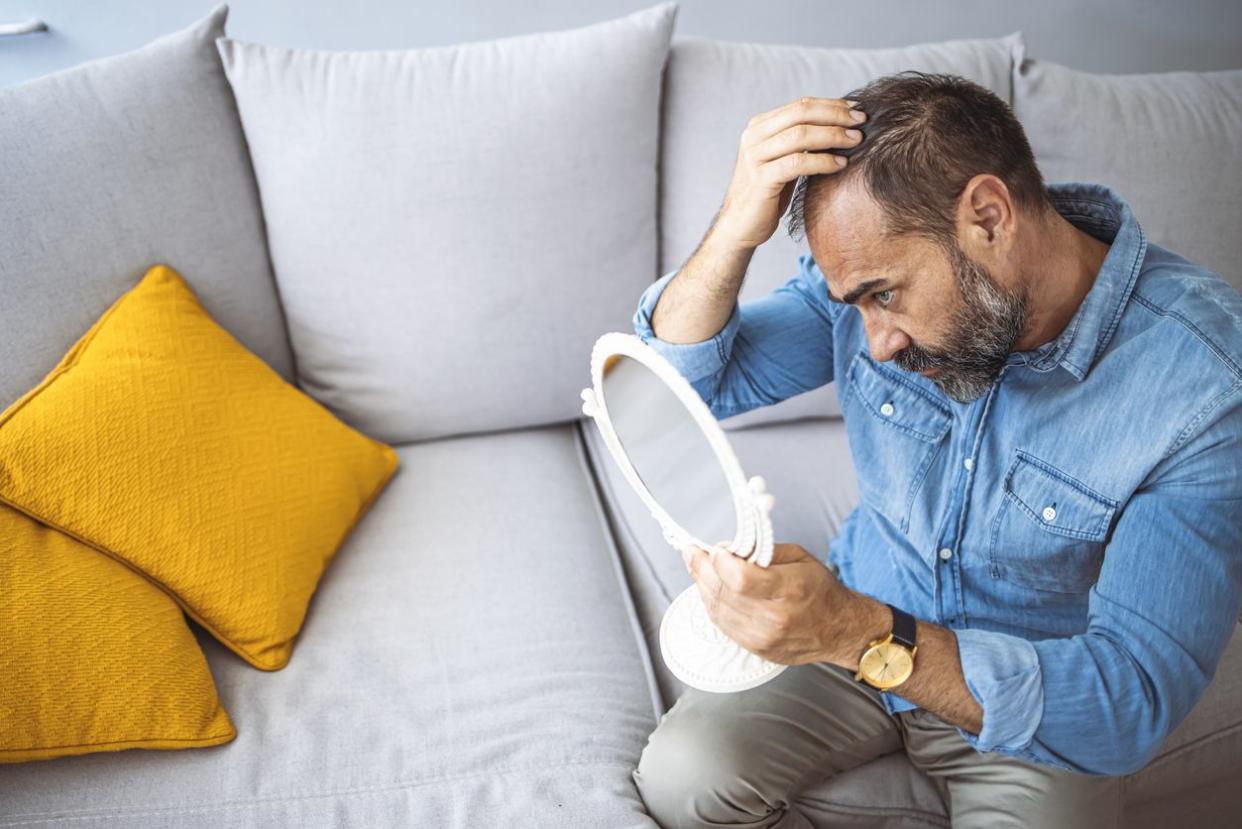10 Tips for Men Who Want to Grow Out Their Hair
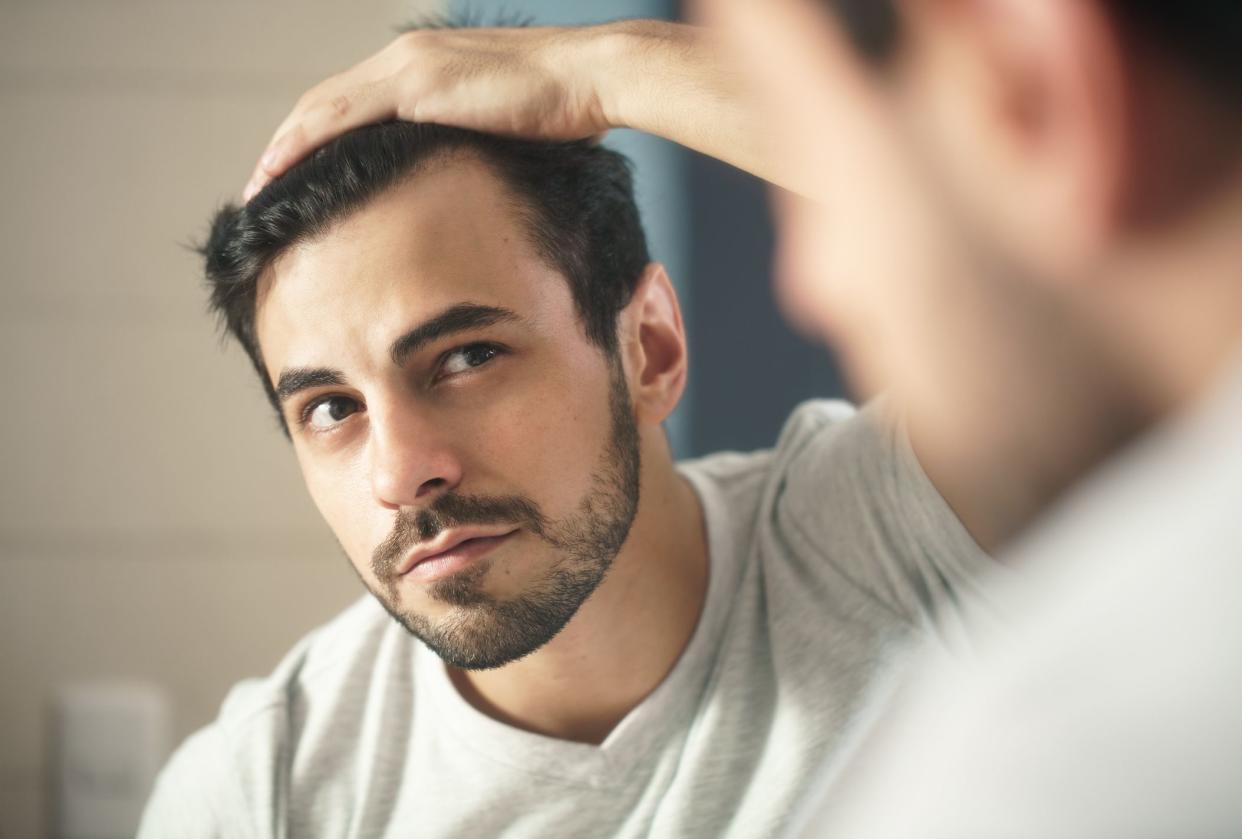
How to Grow Out Your Hair: 10 Tips for Men
Want to grow your hair but don’t have the nerve or know-how to do it? With more people than ever receptive to long hair and beards on guys, growing out your hair might seem like a simple process. But in reality, knowing how to grow out your hair isn’t always straightforward for men.
From basic hair care to styling techniques, the right tactics can keep your hair looking its best as it grows. You can also avoid many common long-hair problems like frizz, excess hair oil, tangles and the dreaded “awkward stage.”
Like many other guys, you might wonder, How long does it take for men’s hair to grow?
We’ll answer this below and share 10 tips to help you grow out your hair while looking good, along with expert techniques to keep your hair healthy at any length.
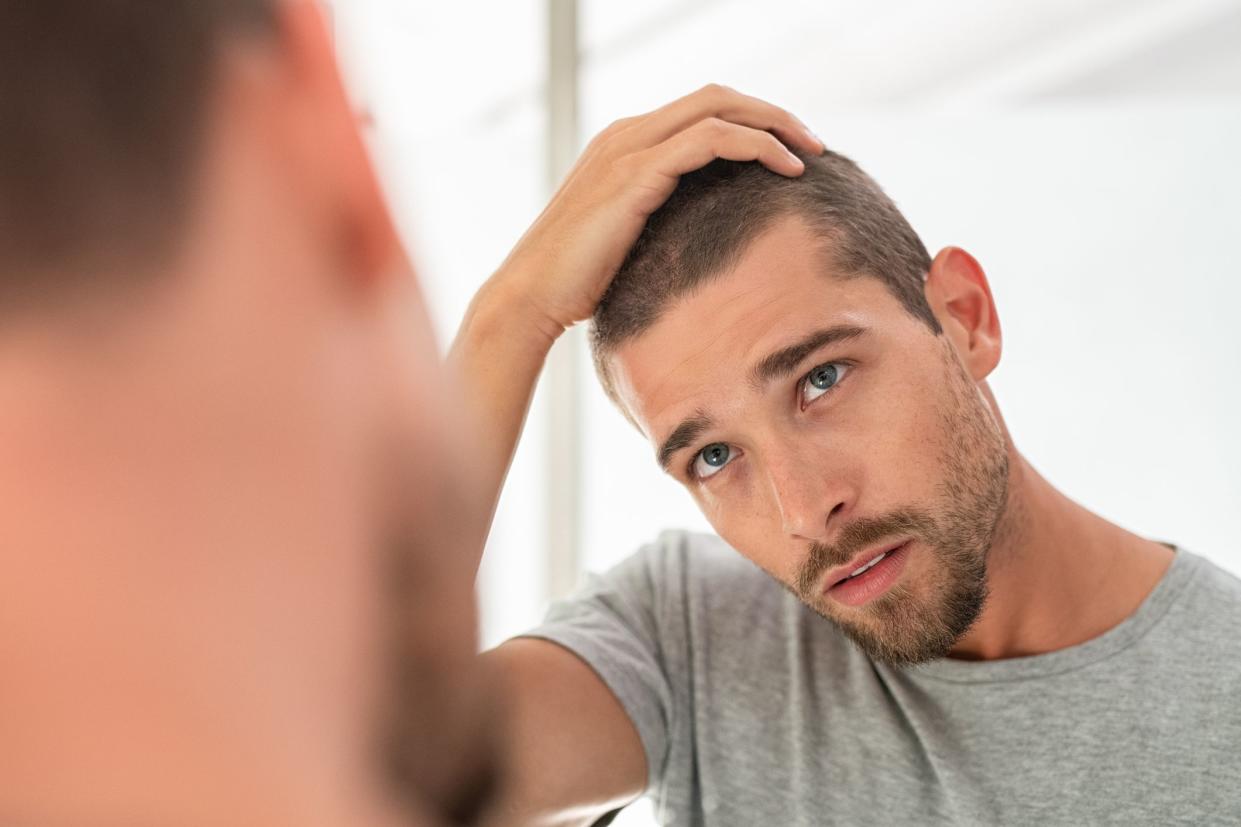
How Long Does It Take to Grow Your Hair Out?
According to the American Academy of Dermatology, the hair on your head grows about six inches a year. Since hair must be 12 to 14 inches in length to reach your shoulders, this means you’ll need about two years of consistent growth to have shoulder-length hair — or roughly 18 months for chin-length hair.
Put simply, growing long hair requires patience. Most men’s hair grows around a half-inch each month, so if you’re hoping for Fabio-style locks in a year or two, you may need to temper your expectations.

10 Tips for Men to Grow Out Hair
If you’ve been Googling tips for growing hair out for men, you’ve probably been surprised by the number of unproven treatments claiming to quickly push your hair through that awkward phase between good-looking short hair and good-looking long hair more quickly.
The long-hair look may benefit from supplements like biotin, washing less frequently to avoid stripping your hair’s natural oils and other stylist-recommended pathways. But more important than the “may work” products are the “will work” elements of hair health you can integrate into your haircare routine.
Whether you’re trying to grow out a mullet or just give your hairstylist more to work with next time you go for a cut, here’s what experts recommend for how to grow out your hair.
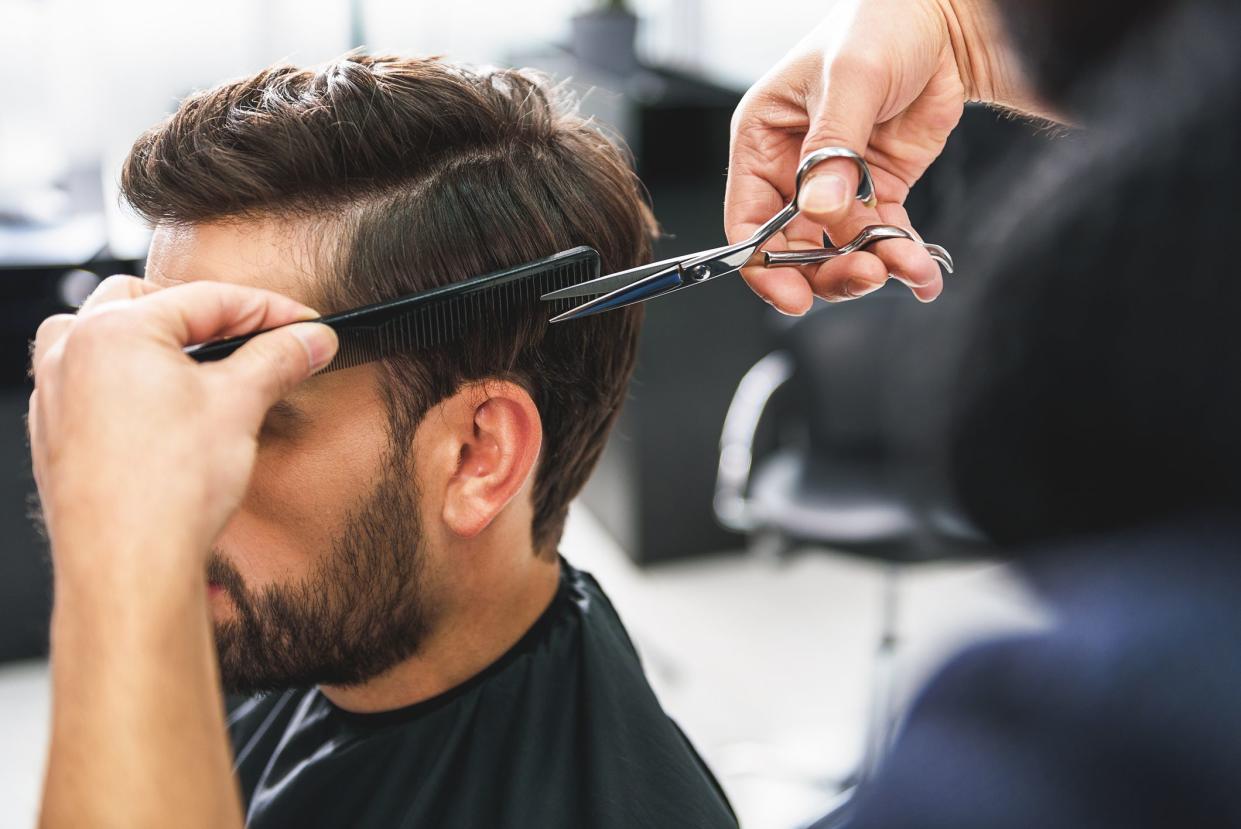
1. Get Your Hair Trimmed Occasionally
Growing your hair out doesn’t have to mean deleting your barber’s phone number. Although it’s obviously not a good idea to cut your hair short while growing it out, having your hair trimmed regularly can help keep it looking its best throughout the process.
Try to visit your barber at least once every three to four months to get regular trims (make sure to let them know you’re growing your hair out) and to fix any areas that aren’t looking their best.
While cutting your hair might seem counterintuitive, trimming off a small amount of hair every now and then is a good way to keep your hair healthy and deal with common annoyances, such as split ends.
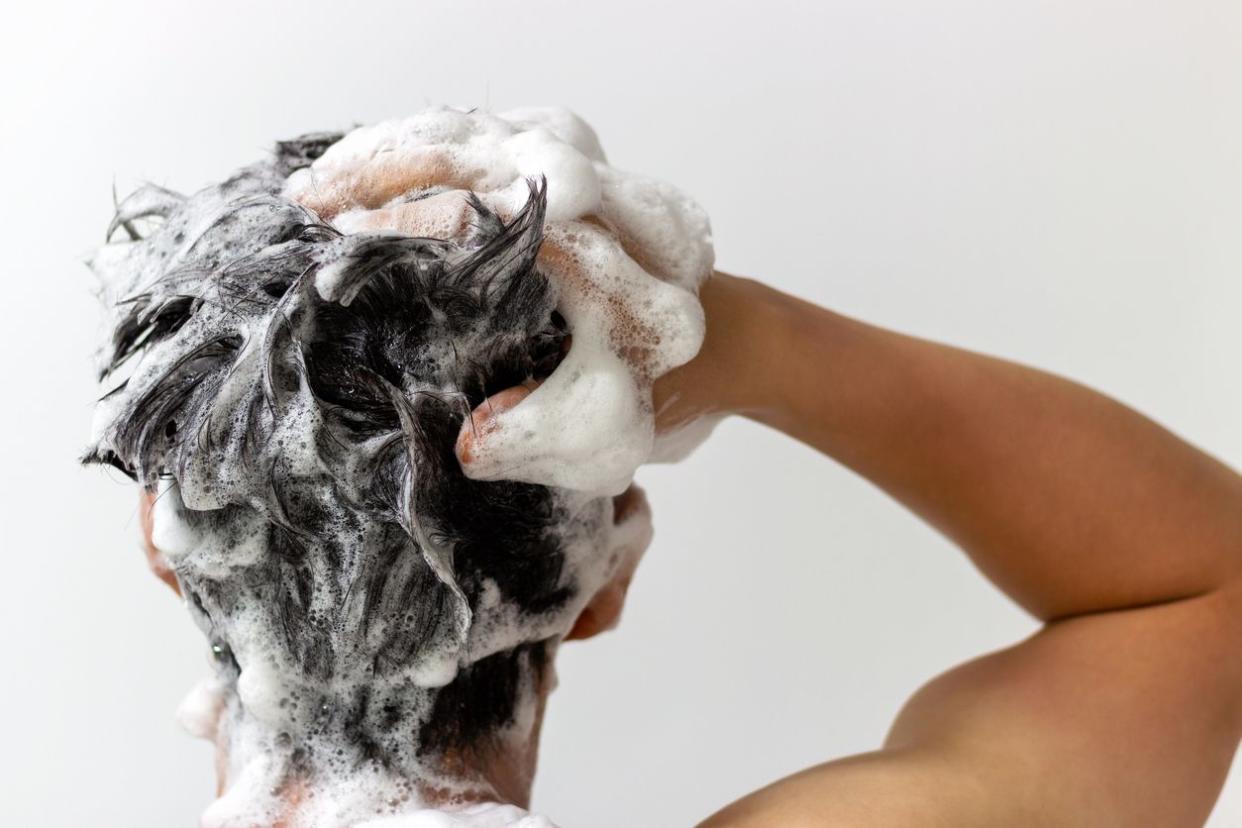
2. Wash Your Hair at the Right Times
Taking care of your hair is important regardless of how long it is. But it’s particularly crucial if your hair has some serious length to it.
Luckily, practicing good hair care isn’t very complicated — start by washing your hair based on how oily it feels.
According to the American Academy of Dermatology, the oilier your hair and scalp are, the more vital it is to lather up frequently.
On the other hand, if your scalp feels dry, you may only need to wash your hair every few days or once a week.
Contrary to advice that claims you should wash your hair every one, two or three days, you only need to wash your hair when you feel you need to — or when it feels like it needs to be cleaned.
Use your best judgment, and treat any “rules” regarding hair washing frequency as guidelines rather than iron-clad laws of haircare.
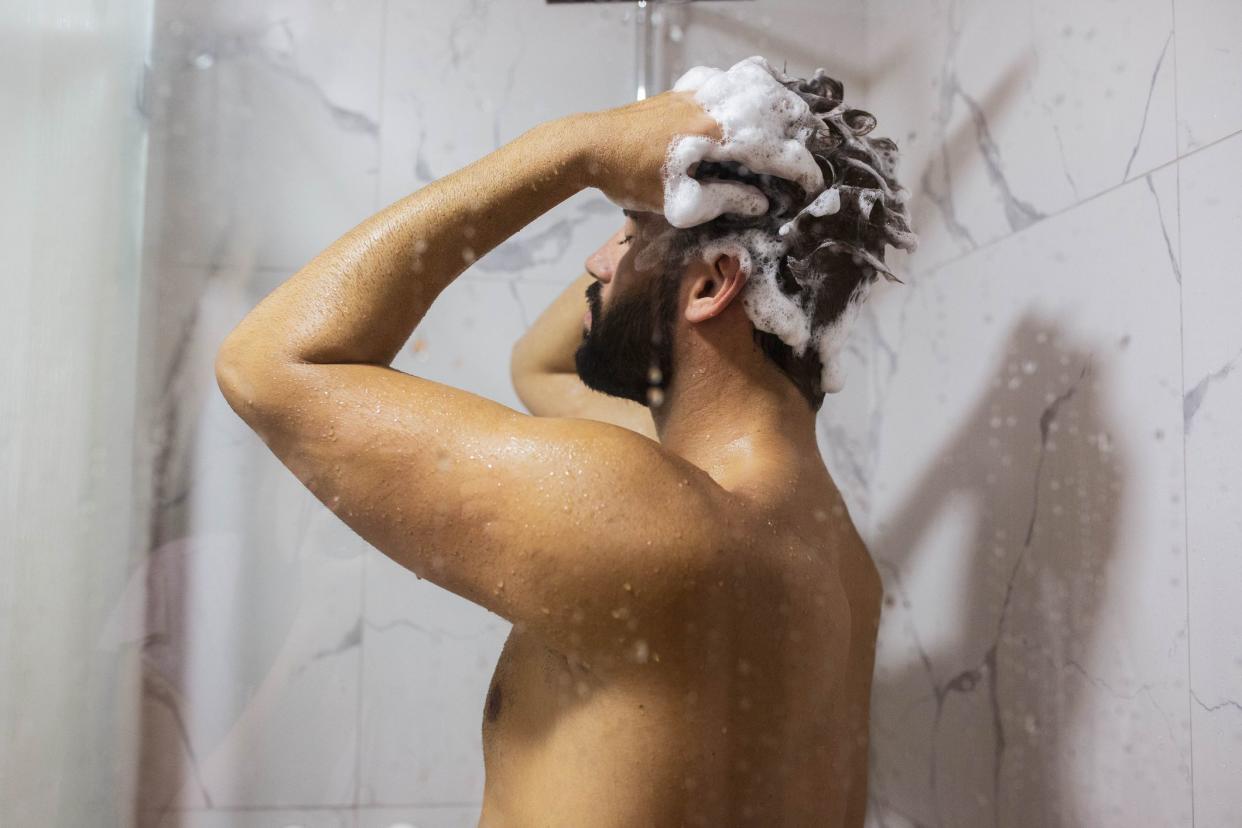
3. Take Care When Lathering Up
When you wash your hair, it’s essential to do it the right way.
Choose a shampoo free of harsh chemicals, and concentrate on cleaning your scalp instead of rubbing shampoo into your hair. This helps to control oil without making your hair feel coarse.
After you’ve finished washing your hair with shampoo, focus on applying conditioner to the tips of your hair, which usually need the most attention. Conditioning the roots can make it look and feel greasy sooner than later.
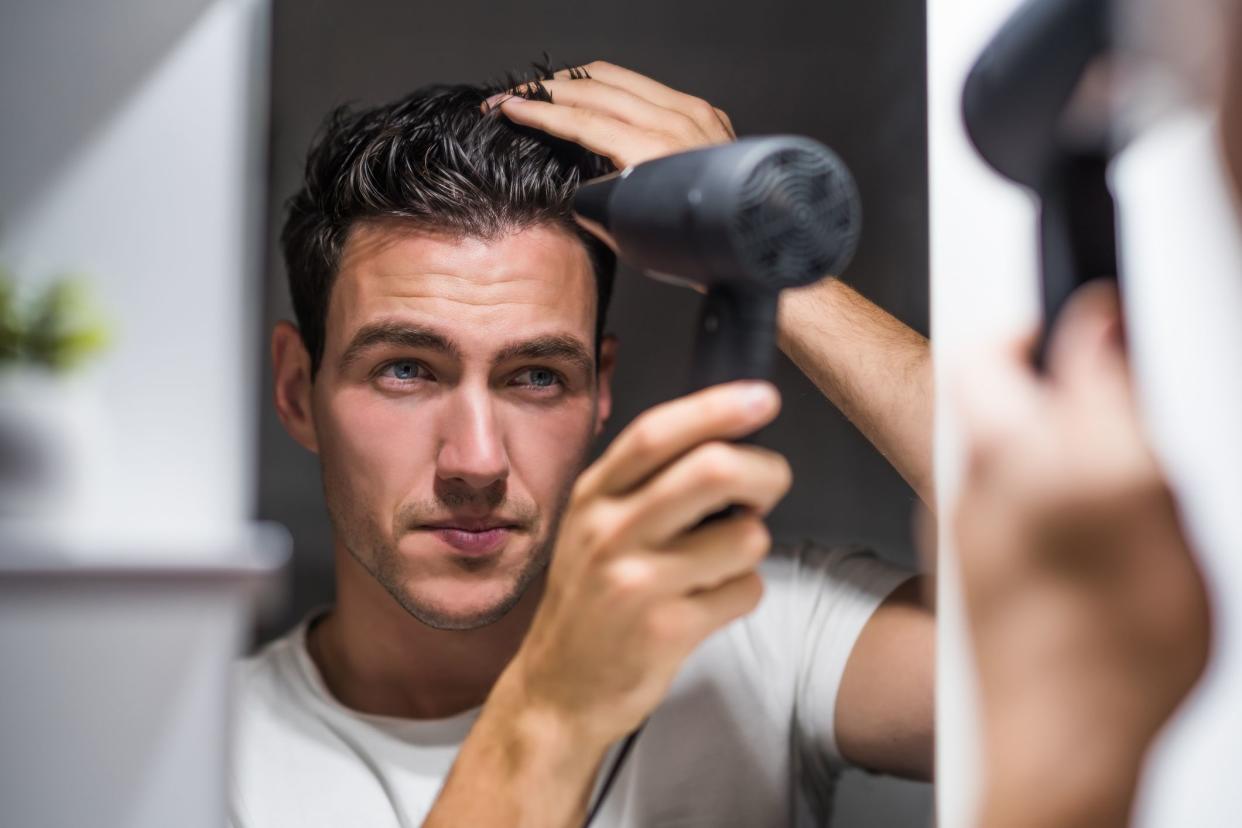
4. Protect Your Hair From Common Sources of Damage
The longer your hair gets, the more critical it is to protect it from common sources of damage. This includes pool water, sea salt, blow dryers and casualties of other styling tools.
Excessive heat (for example, using the strongest setting on your hair dryer or regularly using straighteners), sun (which can damage the outside of your hair and burn your scalp) and overly harsh hair styling products (which can irritate your skin and harm your hair by pulling on its roots) should be avoided whenever possible.
Another common source of hair damage is chlorine, a chemical often used in swimming pools to prevent bacterial growth.
To keep your hair safe when you swim, wear a swim cap and rinse your hair with water as soon as you get out of the pool. If you swim on a regular basis, consider using a swimmer’s shampoo formulated to remove chlorine from your hair.
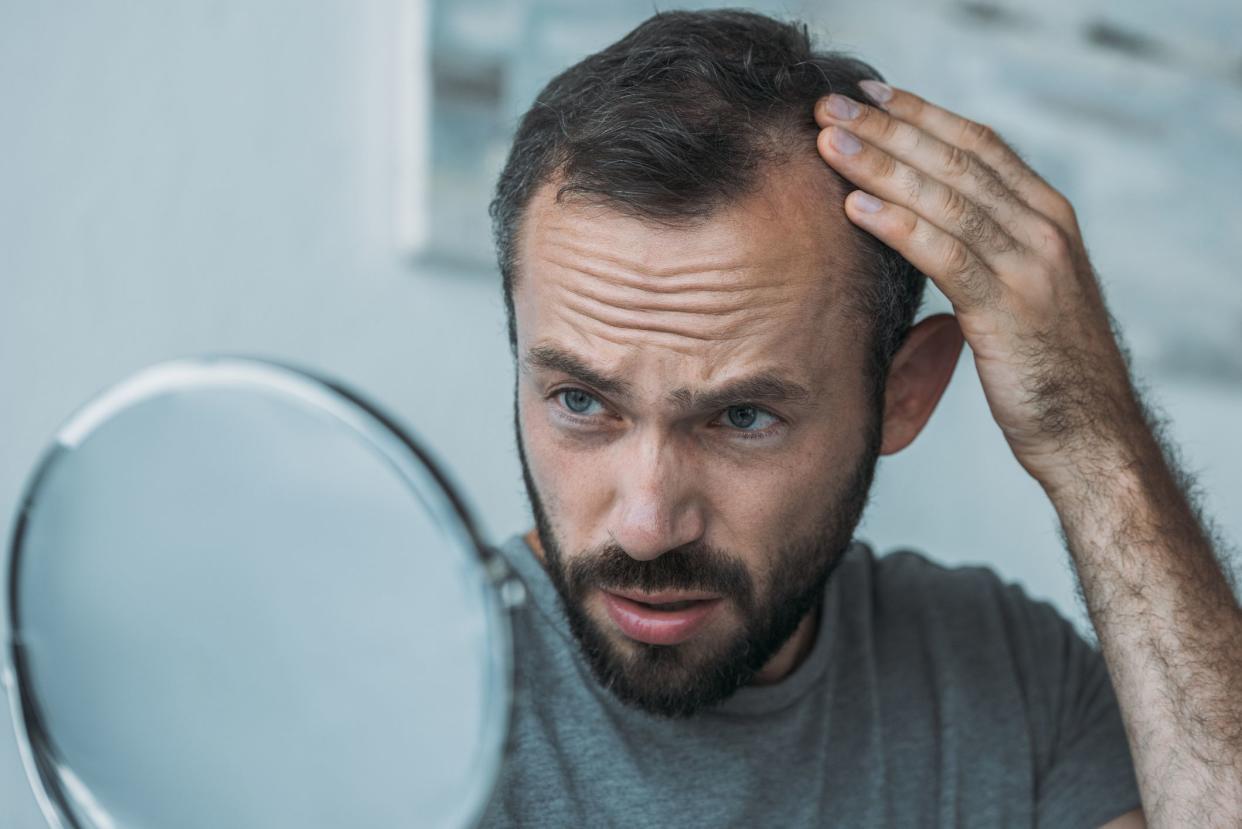
5. Take Note of the Signs of Male Pattern Baldness
Be aware of the early signs of male pattern baldness if you’re growing your hair out.
Common early signs of hair loss include any noticeable change to your hairline, thinning that’s visible on the top of your scalp or excessive hair shedding. Hair strands may also become wispy — a sure sign of thinning hair.
While it’s normal to lose 50 to 100 hairs a day, anything beyond that could be a sign you’re starting to go bald.
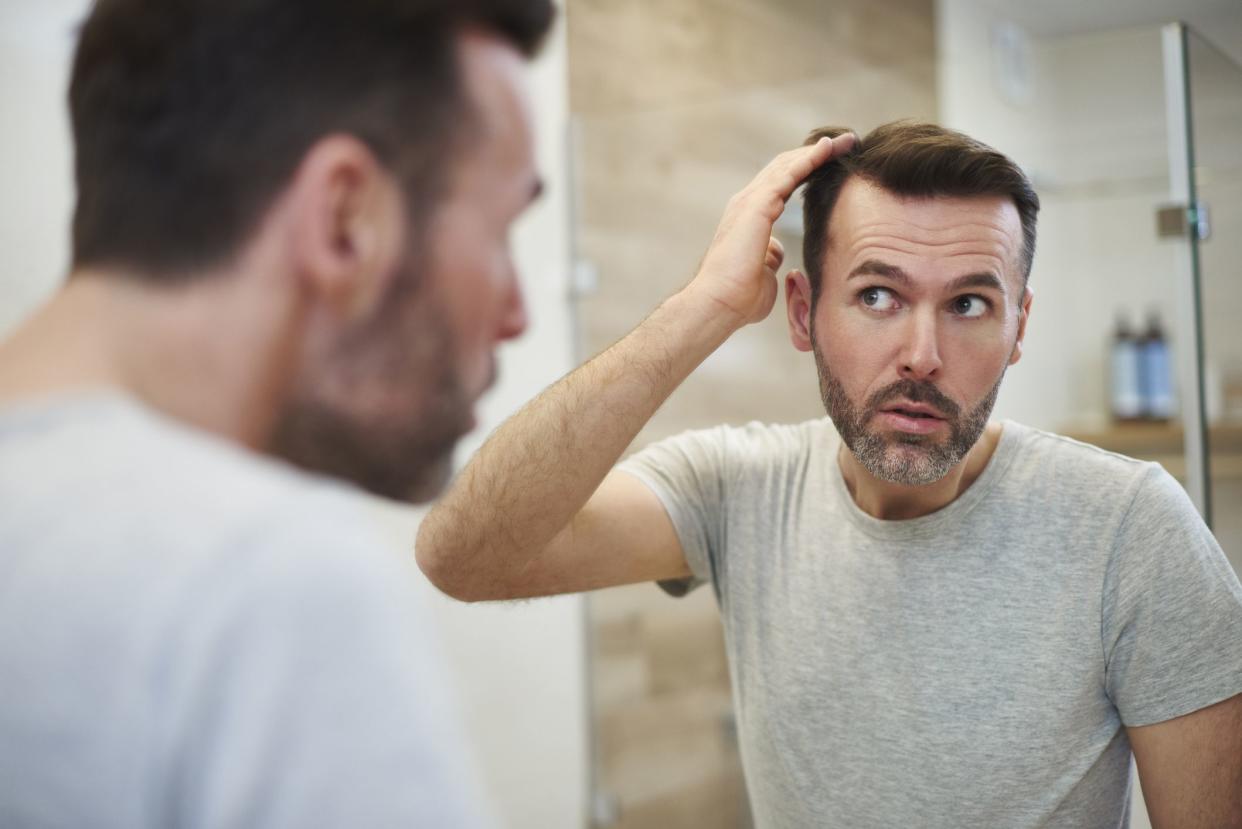
6. If You Notice Hair Loss, Treat It ASAP
If you notice any signs of hair loss, take action as quickly as possible to protect your hair from further damage.
Male pattern baldness — the most common form of hair loss in men — is caused by a hormone called dihydrotestosterone (or DHT for short).
If you’re genetically prone to hair loss, DHT can bind to receptors in your scalp and cause hair follicles to gradually stop producing new hairs.
While male pattern baldness may start slowly, it can get worse at a surprising pace over time as DHT takes its toll on your hair follicles. As such, it’s best to treat it as soon as you notice any common signs of baldness developing.
Currently, the most effective options for preventing hair loss are the FDA-approved medications finasteride (the generic version of Propecia) and minoxidil (Rogaine).
Finasteride works by blocking DHT, while minoxidil works by encouraging hairs to enter into the active growth phase of the hair growth cycle.
The same goes for “lesser” problems like damaged hair, dandruff and other changes in your follicles or scalp health.

7. Think Twice About High-Tension Hairstyles
Are you growing your hair out so you can rock braids, dreadlocks or a man bun?
You might want to reconsider. Why? These hairstyles — as well as others that pull on your hair roots — often contribute to a form of hair loss called traction alopecia.
Traction alopecia develops when a constant pulling force is placed on your hair. This can loosen hair from the follicle and, over time, cause scarring that stops the follicle from producing new hairs.
Besides braids, locs and buns, hairstyles that may cause traction alopecia include cornrows and too-tight ponytails. The most effective way to prevent traction alopecia is to stay away from high-tension hairstyles altogether.
However, if you’re set on wearing your hair in a certain way that pulls it back, you can minimize your risk of developing this type of hair loss by wearing it as loose as possible.

8. Be Careful When You Color Your Hair
When your hair extends below your chin, even a modest amount of gray hair can become much easier to see.
Some guys like a little gray in their hair, and others might be going for the Geralt of Rivia look. But you could also choose to color your hair when too many grays start popping up.
Though dying your hair isn’t necessarily bad for it, you’ll want to take some precautions if you’re trying to grow it out.
Here’s what we recommend when coloring your hair:
Stay “on shade” with your color. You’ll usually get the best results by choosing a color within three shades of your natural hue.
Protect your hair from sun damage. Try applying a leave-in conditioner with zinc oxide, and use a hat to shield your hair from UV radiation, which can fade color-treated hair or make it brittle.
In winter, give your hair plenty of time to rest. It’s best to color your hair every eight to 10 weeks during the cold season to prevent damage.
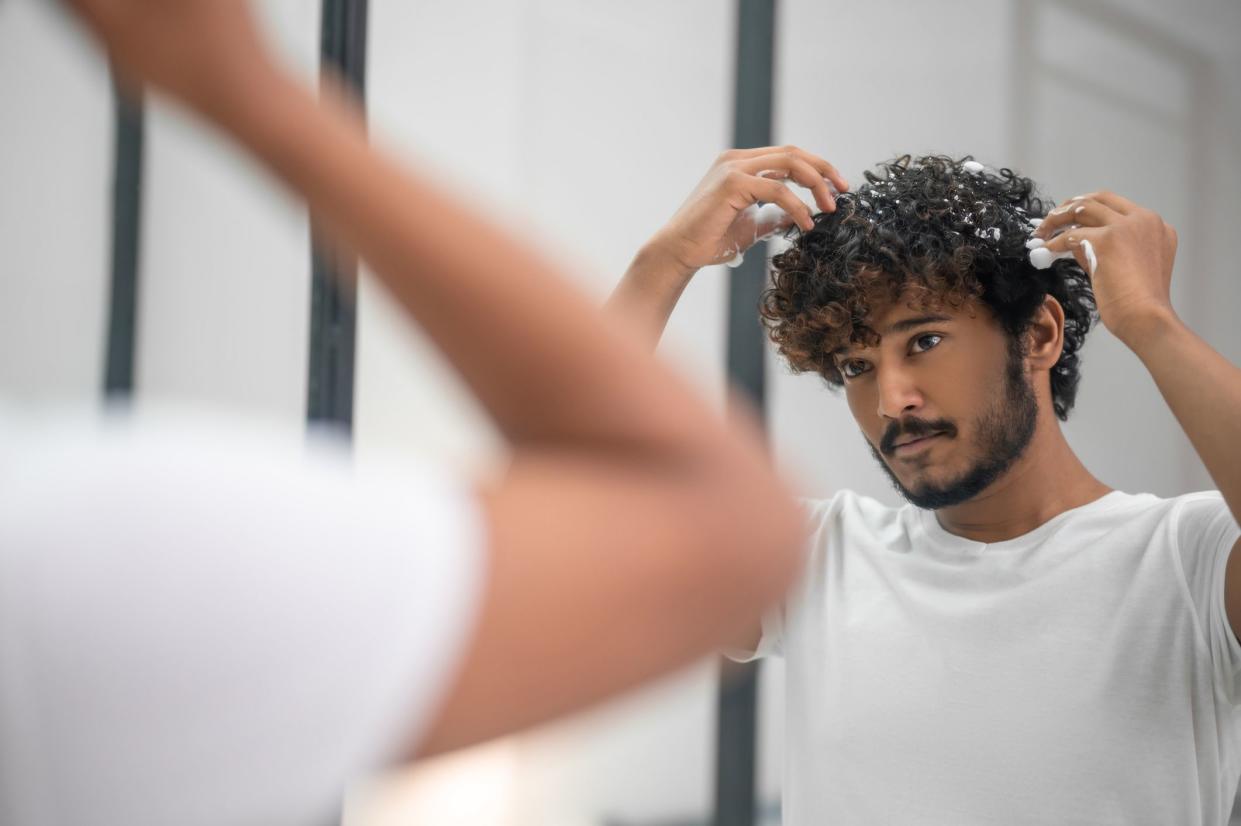
9. Be Gentle With Your Hair
The gentler you are with your hair, the healthier it’ll be and the better it’ll look.
Try to avoid common haircare mistakes, such as brushing your hair a hundred times a day (something it doesn’t need, despite popular belief) or pulling on your hair when you style it.
After washing your hair, it’s best to let it air-dry naturally or use a hair dryer on the lowest possible setting. Try to avoid drying your hair roughly with a towel, which can both mess it up and irritate your scalp.
Finally, if you tie your hair back, use a proper hair tie. Not only are rubber bands an annoyance to remove, but they can also pull on your hair and contribute to breakage.
This goes for all hair types. Whether you have straight hair, frizzy hair, curly hair, coarse hair or fine hair, use the right hair products for your hair type.
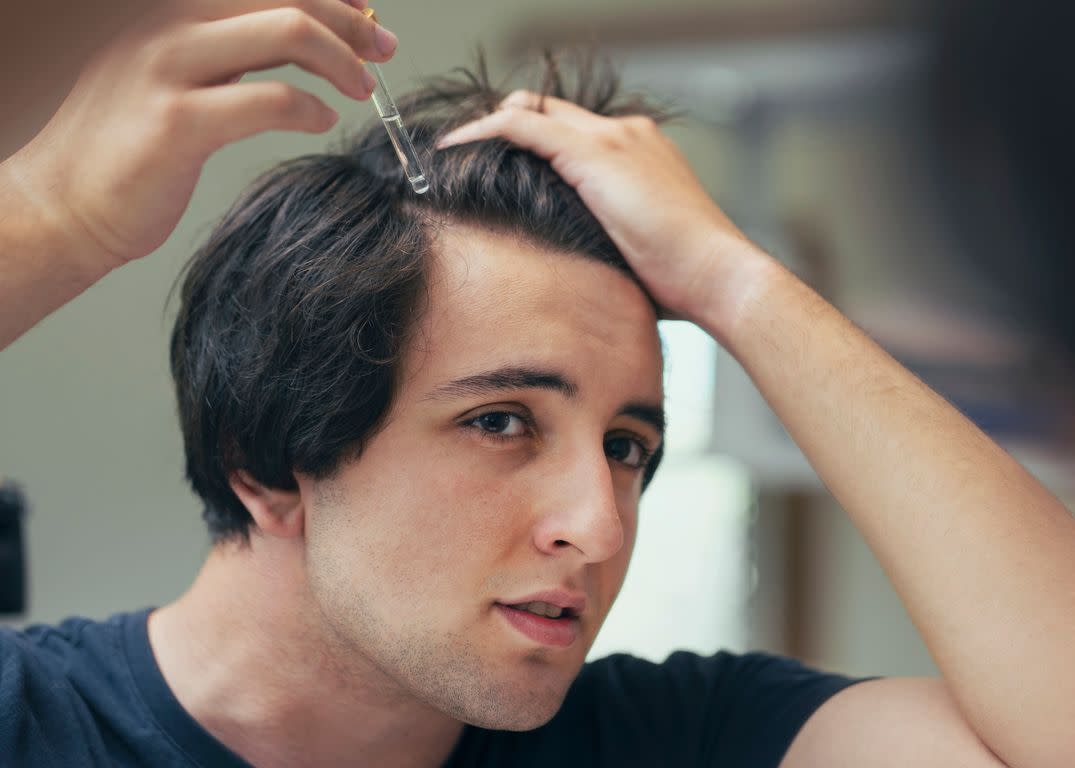
10. Consider Hair Supplements
Beyond taking care with how you handle, style and cleanse your hair, it might be worth exploring ways to encourage growth from the inside.
Eating more nutritious foods certainly won’t hurt. But to speed things along, consider taking hair vitamins or supplements. For instance, biotin gummies that contain biotin, along with folic acid and other essential nutrients that support healthy growth.
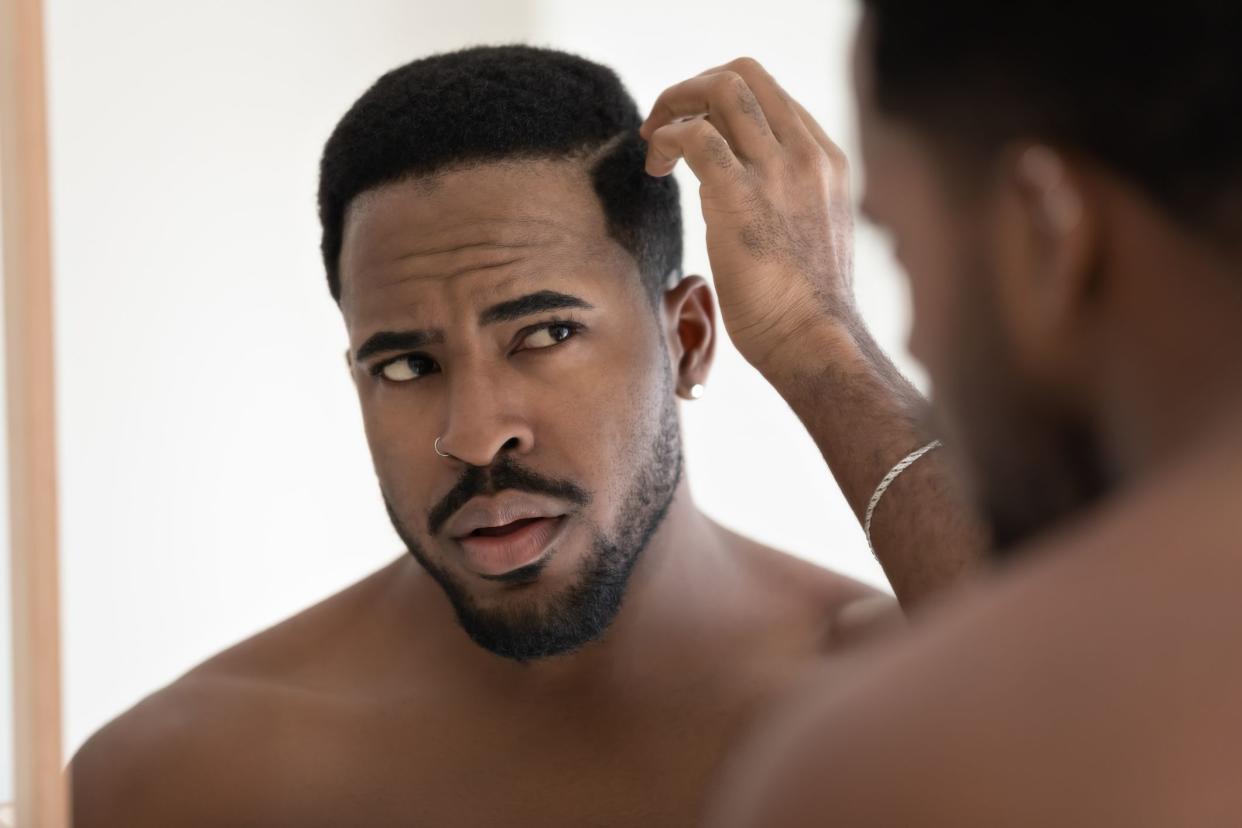
Having Trouble Growing Out Your Hair?
Growing out your hair requires plenty of time. However, once you’ve mastered the basics of haircare, it’s a relatively simple process.
Here’s the bottom line about how to grow out your hair:
Know when to wash and trim your hair. Lather up when it gets greasy, and don’t be afraid to trim it occasionally to prevent split ends.
Use the right shampoo. Besides using one designed for your hair type, a gentle formula is often best.
Avoid things that might cause damage. This includes high heats, chlorine, excessive sun exposure and tight hairstyles.
Treat hair loss ASAP. If you notice any common signs of male pattern baldness, take action as soon as possible to get ahead of the problem.
Want longer hair? Whether you’re planning on chin- or shoulder-length hair, the right haircare products can make a major difference.
This article originally appeared on Hims.com and was syndicated by MediaFeed.org.
